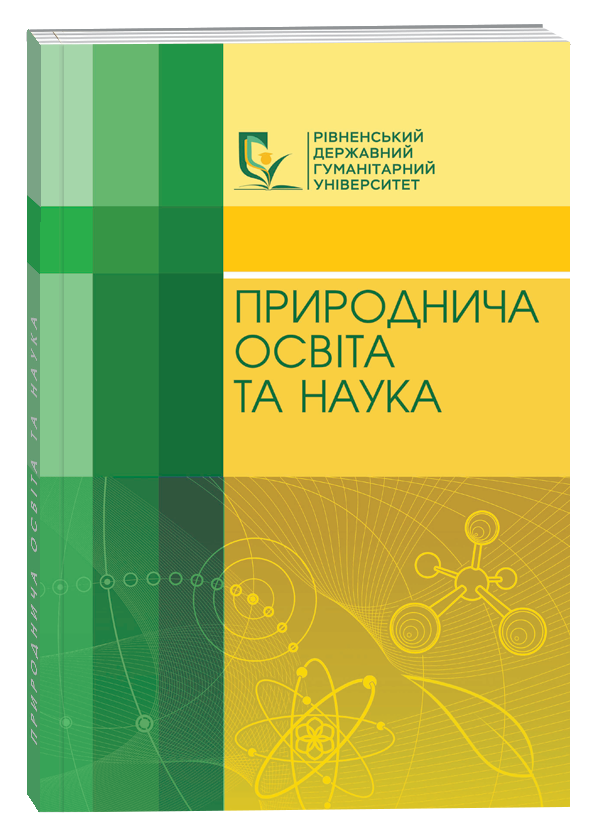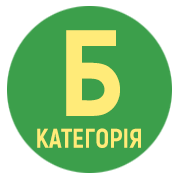NATURAL DYES FROM THE BARK OF FRUIT TREES – A PROSPECTIVE ECOLOGICAL ALTERNATIVE
Abstract
The toxicity, mutagenicity and carcinogenicity of modern dyes for fabrics forced the European Union to issue a Regulation that, starting in 2020, limits the use of a wide range of hazardous substances that have been used for years in the dyeing process in the textile industry. The revival of the forgotten folk craft – chromatics, which was engaged in the extraction and application of natural dyes – is becoming more relevant than ever. Having researched archival materials and works of ethnographers of the 18th and 19th centuries, the authors of this publication are trying to recreate the forgotten recipes of folk chromatics of different ethnic groups of Ukraine. Among them, the use of alum-type mordants raises the most questions. After all, in the mentioned sources, they are mentioned under the single name “sour stone”. The authors of the publication decided to use a modern research method – spectrophotometric analysis – to resolve this issue, and proposed an interesting way of comparing the fixing ability of alums – by changing the optical density of the dyeing solution after removing the dyed fabric from it. The bark of fruit trees was chosen as a source of natural dyes, which was traditionally used for dyeing yarn and linen in the folk chromatics of Ukraine. The bark of domestic plum (Prunus domestica L.), common cherry (Cerasus vulgaris Miller), domestic apple (Malus domestica Borkh.) and common pear (Pyrus communis L.) served as material for research. Two types of alums were used for pickling linen fabric – potassium alum and ammonium alum. Four experimental options were tested: the first – without introducing alum into the dyeing solution, the second – with the introduction of potassium alum, the third – with the introduction of ammonium alum, the fourth – with the introduction of ammonium alum, but with a two-day exposure of the fabric in this dyeing solution after boiling. The obtained natural dyes from plum, apple and cherry bark give different shades of yellowish-orange-red color to linen fabric, and the natural dye from pear bark gives a yellow-green color. It has been shown that potassium alum and ammonium alum shift the absorption wavelengths of dyeing solutions obtained from the bark of cherry, apple, and pear trees towards shorter, i.e., more yellow and yellow-green shades and lead to the displacement of the orange-red gamut of colors from dyeing solutions. Effective mordants have been selected to fix natural dyes from plum and cherry bark: potassium alum and ammonium alum with a prolonged effect, respectively. For apple and pear bark dyes, the investigated types of alums were ineffective.
References
2. Мартосенко М. Г., Пахолюк О. В., Семак З. М. Роль рослинного барвника і протравлювача у формуванні колірної гами забарвлень целюлозомістких текстильних матеріалів. Вісник Хмельницького національного університету. 2010. Вип. 4. С. 217–220.
3. Самілик М. М. Розроблення безвідходної технології одержання натуральних барвників із рослинної сировини. Науковий вісник Полтавського університету економіки і торгівлі. Серія «Технічні науки». 2022. Т. 1. С. 49–54.
4. Commission Regulation (EU) 2018/1513 of 10 October 2018 amending Annex XVII to Regulation (EC) No 1907/2006
of the European Parliament and of the Council concerning the Registration, Evaluation, Authorisation and Restriction of Chemicals (REACH) as regards certain substances classified as carcinogenic, mutagenic or toxic for reproduction (CMR), category 1A or 1B. Official Journal. 2018. L 256, Document 32018R1513. P. 1–7.
5. Joshi R. K. and Kuriyal S. K. Review Dyeing textiles with eco-friendly natural dyes: A brief review. International Journal of Global Science Research. 2023. Vol. 1, Is. 1. P. 2052–2060.
6. Marian S. F. Chromatica poporului romanu. Bucuresci: Tipografia academiei Romana, 1882. 55 p.
7. Patel Shweta, Pandey Ritu, Gupta Harshita, Kambo Neelu, Bhargava Abha. Ecofriendly dyeing of Linen Fabric with Binary Mixture of Natural Dyes. Research & Reviews: Journal of Herbal Science. 2017. Vol. 6, Is. 2. P. 1–5.






